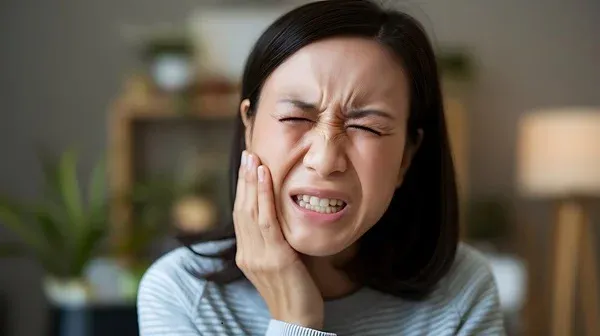Recovery and Rehabilitation in Surgical Orthodontics
Dr. Hoss Abar
Supporting Patients Through the Healing
Undergoing surgical orthodontics can be a transformative experience, significantly improving function and aesthetics. However, the journey doesn’t end with the surgery. Recovery and rehabilitation are crucial phases that significantly impact the overall success of the treatment. This blog will guide you through the essential aspects of the recovery process, providing practical tips and support to help you confidently navigate the healing journey.
Understanding the Recovery Process
Immediate Post-Surgery Phase
- Hospital Stay: Depending on the extent of the surgery, patients may need to stay in the hospital for a short period. During this time, healthcare providers will monitor vital signs, manage pain, and ensure the initial healing process is progressing as expected.
- Initial Recovery: The first few days post-surgery are typically characterized by swelling, bruising, and discomfort. Ice packs and prescribed medications can help manage these symptoms.
Early Recovery (Days 1-7)
- Pain Management: Pain levels usually peak within the first 48 hours and gradually decrease. Over-the-counter pain relievers or prescribed medications can be used to manage this discomfort.

- Diet and Nutrition: A soft or liquid diet is often recommended to avoid irritating the surgical site. Nutritional intake is crucial for healing, so incorporating nutrient-rich, easy-to-consume foods is important.
- Activity Level: Rest is essential during the early recovery phase. Patients should avoid strenuous activities and follow their orthodontist’s guidelines regarding physical exertion.
Intermediate Recovery (Weeks 2-4)
- Swelling and Bruising: These symptoms should continue to subside. Gentle activities can usually be resumed but avoiding any actions that might stress the healing areas is important.
- Oral Hygiene: Maintaining excellent oral hygiene becomes increasingly important to prevent infections. Patients should use prescribed mouth rinses and follow proper brushing techniques to care for their teeth and gums.
Late Recovery (Weeks 4-6 and beyond)
- Follow-Up Appointments: Regular check-ups with the orthodontist are vital for assessing healing progress and making necessary adjustments to the treatment plan.
- Gradual Return to Normal Activities: As healing progresses, patients can gradually return to their usual activities, including light exercise. It’s important to follow specific recommendations from the orthodontist regarding the timeline for resuming normal activities.
- Ongoing Care: Adherence to any long-term care instructions, such as wearing retainers or continuing specific oral care routines, is crucial for the overall success of orthodontic treatment.
- Monitoring Progress: Continuous monitoring and periodic evaluations will help ensure the surgical outcomes are maintained and any potential issues promptly addressed.
Diet and Nutrition During Recovery
- Gentle on Healing Areas: Opt for soft, easy-to-chew foods that won't irritate or stress the surgical site. Ideal choices include mashed potatoes, yogurt, smoothies, applesauce, and well-cooked pasta.
- Avoid Hard and Crunchy Foods: Steer clear of foods that are hard, crunchy, or chewy, as they can cause discomfort or disrupt the healing process.
- High in Vitamins and Minerals: Incorporate foods rich in vitamins and minerals to support healing. Focus on options like pureed fruits, vegetables, and nutrient-dense soups.
- Protein: Ensure adequate protein intake to support tissue repair and recovery. Soft proteins such as scrambled eggs, tofu, and well-blended protein shakes are good choices.
- Stay Hydrated: Drink plenty of fluids to stay hydrated and help your body recover. Water is the best choice, but you can also include clear broths and herbal teas.
- Avoid Sugary and Acidic Drinks: Limit or avoid sugary and acidic beverages, such as soda and citrus juices, which can irritate the surgical site.
- Frequent Small Meals: Eating smaller, more frequent meals can be easier on your body and ensure you get the nutrients you need without overwhelming your digestive system.
- Avoid Overeating: Be mindful of portion sizes and avoid overeating, which can cause discomfort and strain your digestive system.
- Temperature: Avoid very hot or cold foods and drinks, as extreme temperatures can cause discomfort or sensitivity.

- Seasoning: Use mild seasonings and avoid spicy or heavily seasoned foods that could irritate your mouth and surgical area.
- Progressive Diet: As you heal, gradually reintroduce more solid foods into your diet. Start with soft, easy-to-chew options and slowly incorporate more variety as tolerated.
- Listen to Your Body: Pay attention to how your body reacts to different foods and adjust your diet accordingly.
Follow-Up Appointments and Monitoring Progress
Follow-up appointments and monitoring are critical to the recovery process after surgical orthodontics. These visits ensure that healing is progressing as expected, address any complications, and allow for necessary adjustments to your treatment plan. Here's what you need to know:
- Healing Assessment: During follow-up visits, your orthodontist will evaluate your healing progress and ensure that the surgical site is recovering properly.
- Treatment Adjustments: Based on your progress, your orthodontist may adjust your treatment plan, including braces or other orthodontic devices.
- Examination: Expect a thorough examination of the surgical site, including checking for signs of infection, swelling, or other complications.
- Imaging: In some cases, your orthodontist may take additional X-rays or other imaging to assess the alignment of teeth and the overall success of the surgery.
- Feedback and Instructions: You'll receive feedback on your recovery progress and any new instructions for care or lifestyle adjustments.
- Record Symptoms: Record any symptoms or concerns you have experienced since the last visit, including pain, swelling, or changes in oral health.
- Questions and Concerns: Prepare any questions or concerns you may have about your recovery or treatment progress to discuss with your orthodontist.
- Self-Monitoring: Pay attention to how your mouth feels and looks during recovery. Notice any unusual changes, such as persistent pain, significant swelling, or unexpected changes in your bite.
- Report Issues: If you experience any problems or notice any issues between scheduled appointments, contact your orthodontist promptly to address them.
Long-Term Follow-Up
- Retention Phase: After the initial recovery phase, you may enter a retention phase where you'll need to wear retainers or follow other maintenance protocols to ensure the long-term success of the treatment.
- Ongoing Care: Regular check-ups will continue to be important to monitor the stability of your results and make any necessary adjustments.
- Patient Responsibilities
- Adherence to Instructions: Follow your orthodontist's post-operative care instructions and recommendations.
- Appointment Attendance: Attend all scheduled follow-up appointments to ensure your recovery stays on track and receive any additional care needed.
Real-Life Experiences
Initial Reactions and Early Recovery
- Emily’s Story: “The first few days after my surgery were challenging. The swelling was noticeable, and I was on a soft diet. I found that keeping ice packs on my face really helped with the swelling and pain. The soft foods were challenging, but smoothies and yogurt became my best friends.”
- Michael’s Experience: “I was initially surprised at how much rest I needed. The pain was manageable with medication, but the first week was the toughest. I made sure to follow all the post-op care instructions, and it really paid off.”
Diet and Nutrition Challenges
- Sarah’s Tips: “Navigating the soft food diet was tricky initially. I quickly learned to make the most of blended soups and mashed vegetables. I also used a straw to drink, making things easier and more comfortable.”
- Tom’s Advice: “I kept a food diary to track what worked well. I discovered that soft scrambled eggs and well-cooked pasta were easy to eat and satisfying. Staying hydrated was key, so I always kept water handy.”
Managing Discomfort and Swelling
- Jessica’s Insights: “One thing that really helped me was using an extra pillow to keep my head elevated while sleeping. It minimized swelling significantly. Also, taking my pain medication regularly and not waiting until the pain was too intense made a big difference.”
- David’s Experience: “A combination of ice packs and gentle massages around my jawline helped alleviate some discomfort. I also followed my orthodontist’s instructions to avoid any unnecessary strain on my mouth.”
Recovery Milestones and Adjustments
- Anna’s Journey: “As I progressed, I was able to slowly reintroduce more solid foods. It felt like a big milestone when I could start eating normal meals again. I kept my orthodontist informed about any issues I faced.”
- John’s Story: “One of the best moments was when I finally returned to my regular exercise routine. It was important to listen to my body and not rush things. Gradually resuming normal activities helped me feel like I was returning to normal.”
Advice for Future Patients
- Laura’s Recommendations: “My biggest advice is to be patient with yourself. Recovery takes time, and everyone’s experience is different. Following your orthodontist’s instructions closely and keeping a positive attitude will make a big difference.”
- Chris’s Insight: “Make sure to ask plenty of questions before and after your surgery. Understanding what to expect helped me manage my recovery better. And don’t hesitate to reach out to your orthodontist if you have any concerns.”
Contact your Pinole dentist, Dr. Hoss Abar, DDS, MSD at Abar Orthodontics, to learn more about recovery and rehabilitation in surgical orthodontics.
Resource:
Surgical Orthodontic: Procedures and How They Can Benefit Your Oral Health and Aesthetics.
*This media/content or any other on this website does not prescribe, recommend, or prevent any treatment or procedure. Therefore, we highly suggest that you get the advice of a qualified dentist or other medical practitioners regarding your specific dental condition.*
More To Explore
About Us
We believe that every patient deserves to feel confident about their smile. Years of experience creating beautiful and flawless smiles.
Opening Hours:
Monday - Thursday: 8:00 AM - 5:00 PM
Friday: 8:00 AM - 12:00 PM
Saturday - Sunday: Closed
Abar Orthodontics, Pinole, CA
1500 Tara Hills Drive., Suite 204
Pinole, CA 94564
Abar Orthodontics, San Leandro, CA
145 East 14th street., #100
San Leandro, CA 94577
© 2026Abar Orthodontics | All rights reserved | Powered by:Vigorant, Inc.
